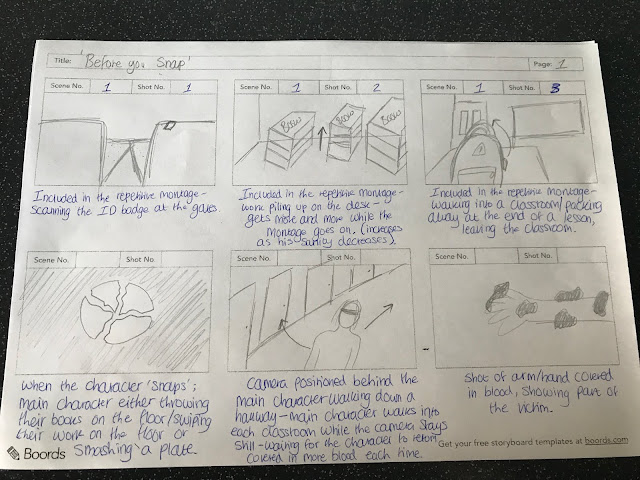Create a list of cinematic ideas for a key sequence: this must include extreme close up, medium shot, two shot, zoom-in, high angles, low angles, low-key lighting, editing, sound, etc. Beginning: The short film will start off with a repetitive montage of shots. These shots will be of: walking into college, scanning the card, walking to class, getting notes and books out, taking notes, packing away, walking out of college (?); regular things that happen on a day to day basis within the college. These will then be repeated through the use of editing to emphasise the repetition of a day-to-day life. The shots will slowly get faster and faster, until the character 'snaps'. Middle: The main character, Michael, will then go on a murderous killing spree, much in the style of Michael Myers in terms of the weapon, but Jason Voorhees in terms of the mask. There will a use of middle shots from behind, not showing the main character's face but will show him going into rooms


